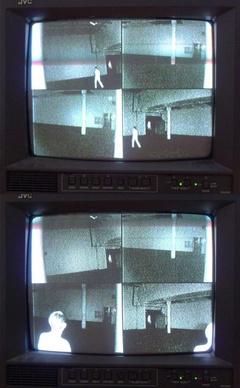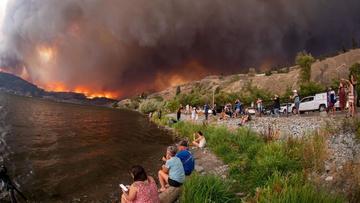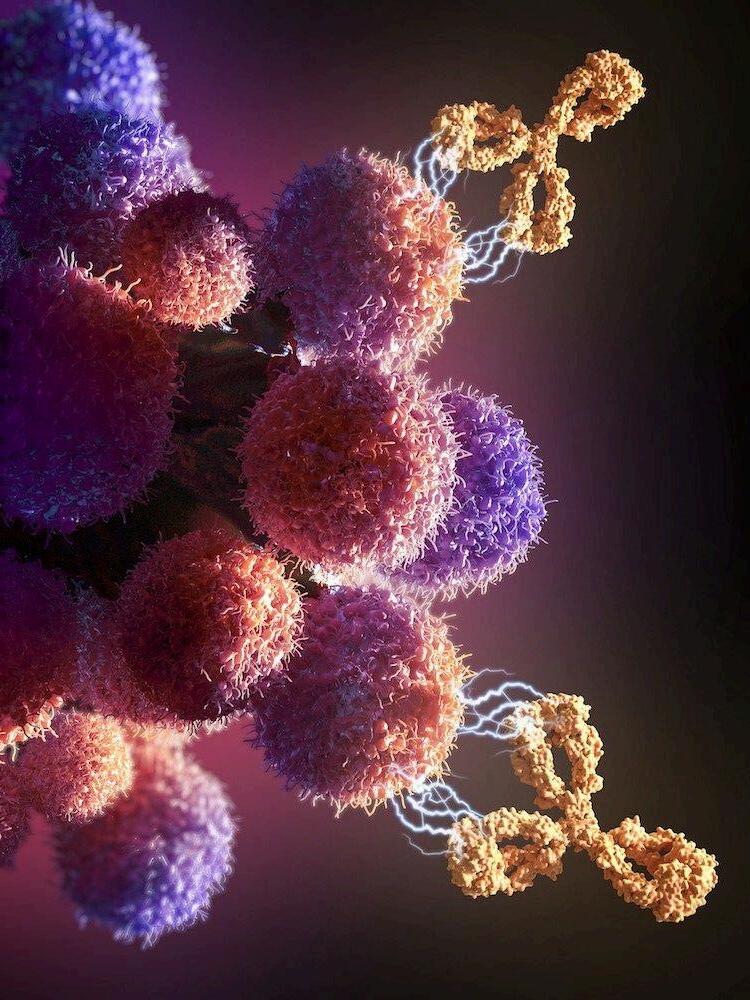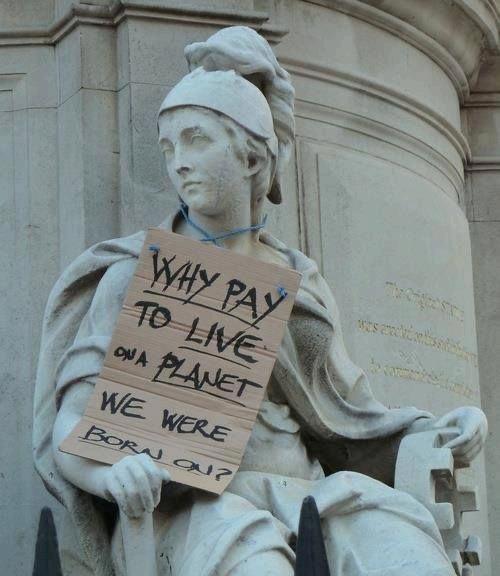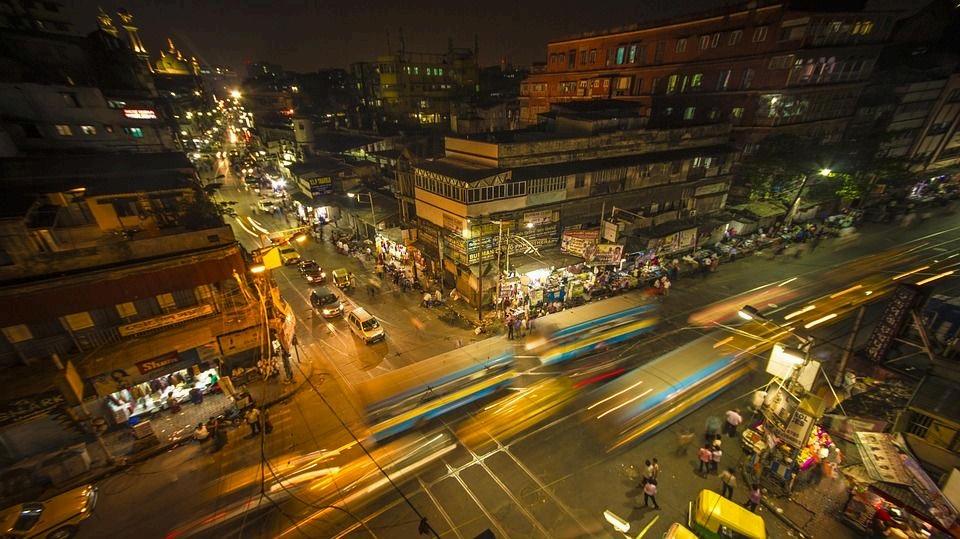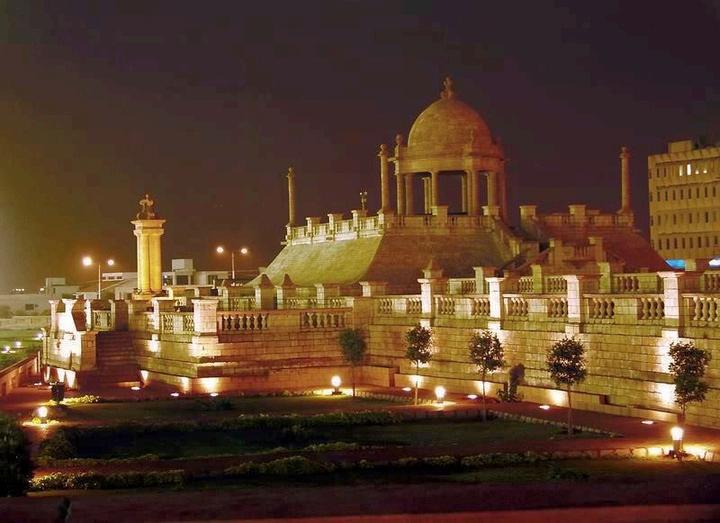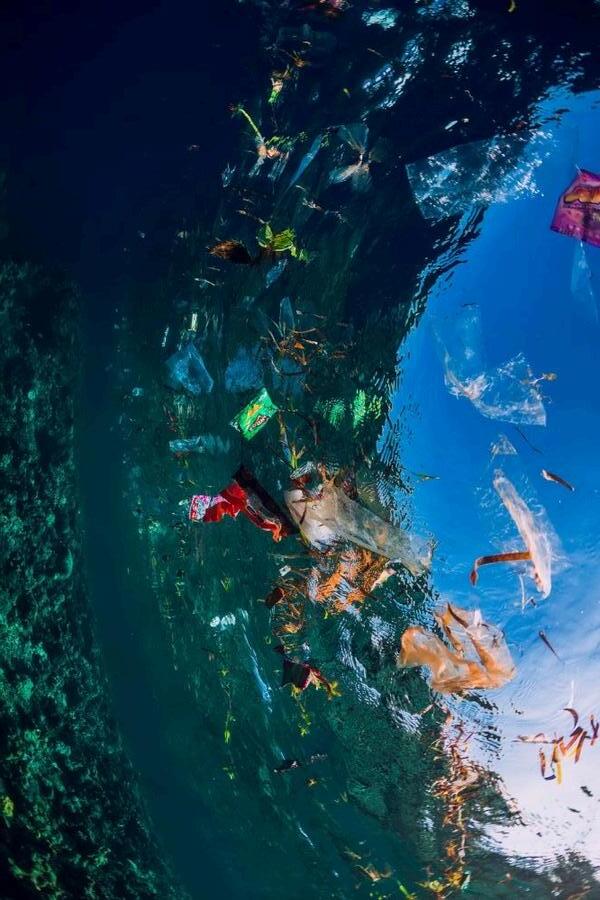THE TEAM
Banksy is back, and his nine graffitied works around London in nine days have prompted the usual questions. Is it art? Vandalism? And what does it mean, anyway? All featured wild animals – among them a horned mountain goat perched atop a narrow column, a trio of acrobatic monkeys swinging across a bridge, pelicans eating fish on a wall above a fish bar, a rhinoceros mounting an abandoned grey car with a horn-like traffic cone on its hood and, at London zoo on the last day, a gorilla lifting a curtain to release a sea lion, birds, and butterflies to freedom.
Banksy has been an enigma in the artist community, from being a political activist to a film director. Shrouded in mystery, his identity remains unknown even after 30 years of involvement in the global graffiti scene Establishing his name in the 1990s, his street art has reflected parts of his personality, with his dark sense of humour and bold and unapologetic opinions on social and political topics, mainly appearing on street walls through graffiti art
In October 2018, Banksy’s iconic image of ‘Balloon Girl’, featuring a young girl letting go of a heart-shaped balloon as a beacon of innocent hope, was sold during a Sotheby’s auction for 1.04 million pounds. The moment it was pronounced “sold,” a strange alarm sounded from within the painting’s frame, its trigger source unknown Immediately, the painting started to descend through its bottom, which turned out to be a shredding mechanism. Banksy had rigged the painting to be destroyed and said regarding its destruction, “The urge to destroy is also a creative urge ” The ‘Balloon Girl’ quickly became a large internet scandal and skyrocketed Banksy’s fame. He now holds the title of one of the most unconventional artists of his time for his intriguing methods of spreading art, provoking inspiration and a whole new version of expression through art, which is often called the Banksy effect.
But why is his work significant, aside from its creativity? The true essence of Banksy’s work lies in its political messaging. Banksy was never one to shy away from the world of politics. One of his works depicted the European immigration crisis in 2019 To raise money for immigrant charities, Banksy sold three paintings, each portraying 19th-century seascapes, while adding abandoned life jackets and rafts to highlight the devastating struggles of immigrants attempting to cross to Europe.
His works integrate current issues, like the 19th-century seascapes, with contemporary forms of art as a way to bring out the pressing matters in society and therefore encourage public discourse His tactics make public settings become areas for political engagement by challenging views to confront uncomfortable truths and reconsider the thinking patterns that were instilled in them. His work also serves as a visual commentary challenging the status quo of society Banksy's influence on the political landscape is significant; he uses art as a tool to sway public opinion and inspire change, making him a key figure at the intersection of art and politics His art has become a form of activism, challenging authority and sparking important conversations about topics like war, poverty, and the environment.








The ‘'Thought Police'’ and the ‘'Party'’ were once nightmares: Orwellian nightmares straight from the author’s imagination Now, those nightmares are paralleling our reality, following in the footsteps of the 'Thought Police', the 'Party', and the pervasive hand they extended over the minds of people. And nothing emulates them more perfectly than modern-day technology and social media.
Big tech companies track our every online move bearing an eerie similarity to the omnipresent Big Brother and use this information to manipulate our thoughts and decisions Orwell’s 'Thought Police' enforced its agenda through fear and open surveillance, whereas social media exerts its influence more subtly Algorithms curate content that reinforces existing beliefs, creating echo chambers that shape users ’ perceptions and limit exposure to diverse viewpoints. This aids in polarising people and diminishing individual critical thinking They also sell user data to advertisers, marketers, and political candidates, monopolising personal information to manipulate users.
The widespread misinformation on social media also moulds public opinion and influences decisions on everything from politics to health. Misinformation was commonly used by the 'Party' to further people towards their cause, a common tactic used today that exacerbates the echo
chamber effect described above
Another practice perpetuated by the 'Party' in 1984 was the Two Minutes Hate, now a practice mirrored in the cycles of viral outrage These viral outrages lie at the very core of the social media platforms that use their algorithms to keep their users engaged by showing them content that is evocative, especially of rage It is incredibly easy to get sucked into this manufactured rage as sensationalised or misleading headlines compel people to react without delving further into the topic.
This erasure of nuance on social media mirrors Newspeak’s goal in 1984: to simplify language and eliminate freedom of thought Our language is becoming more reductive and simplistic as a result of social media’s character limits and the use of hashtags to promote easy-to-understand ideas This simplification of thought serves to further diminish individual critical thinking.
Today, social media has become a medium for manipulating people’s thoughts, much like the 'Thought Police' was the medium through which the 'Party' controlled people’s thoughts 2024 is the new ‘1983’’, on the precipice of the 'Thought Police' and the 'Party' coming to reality, close to 1984, but not completely there yet.
On 29th July, in Southport, UK, a horrific mass stabbing was committed by 17 year old, Axel Rudakubana at a
This series of incidents had brought to light the degree of misrepresentation Muslims and other minorities get, whether it be through social media or word of mouth In reality, this attack is a dreadful and very
T A H A A L I Taylor Swift themed dance class, by the end of which, three little girls were murdered and 10 others injured. Before the day was over, the assailant had been falsely labelled as a Muslim refugee by right-wing leaders such as Tommy Robinson, a British antiIslam campaigner and one of the UK's most prominent far-right activists, and Andrew Tate, an American and British social media personality, businessman, and former professional kickboxer This immediately resulted in a series of anti-immigrant protests that continued until the 5th of August, with multiple minor incidents reported after the date. These demonstrations were anything but peaceful, with multiple threats to immigrants, racist attacks, arson, and looting. The main demand of most of the rioters was for action to be taken by the government against immigrants in the UK
horrific reminder of the discrimination of immigrants by a minority in the UK and their willingness to blame the problems in society on immigrants Within these past few days, multiple problems such as lack of sufficient housing and employment, as well as a shortage of necessities have risen astronomically.
In my opinion, immigrants bring valuable economic growth to a country and receive a chance to make a better life for themselves. Many countries would be hard-pressed to find employees to work in the most basic of professions. Not only that, but with the help of immigrants a more diverse community is created where better ideas are fostered.
As a member of the Muslim community, it is my heartfelt belief that the world as a whole should finally take action against racism and discrimination. On an individual level, we must take care to make sure we are not hurting or excluding others with our words We must also make sure to verify everything we see on social media, and not let our biased opinions and stereotypes cloud our rational judgement, especially in sensitive matters, such as the ones that bring destruction to the members of society.
W I L L A I
R E P L A C E
T R A D I T I O N A L M E T H O D S O F E D U C A T I O N ?
Recently, we have witnessed AI take the world by storm. The AI revolution has spread into different sectors, including education Large Language Models (LLMs), programmes that generate text based on a prompt, are being used for making jokes, essays, articles, law papers, and everything else under the sun
The issue is, many people believe that using LLMs to replace our traditional methods of education However, using LLMs in education can be extremely detrimental Following are a few reasons using LLMs can be harmful.
The first is fairly obvious. LLMs have a glaring issue called hallucinations. Large Language Models only spit out the next most likely word based on a mathematical prediction algorithm, with no regard for whether the things they are saying are real or not This leads to LLMs 'making up' facts. This is extremely disastrous in education since you could 'learn' something from ChatGPT that is false, and things can be hard to unlearn
“Fun Fact: A lawyer got into trouble for using ChatGPT with a legal case because the LLM just referenced cases and laws that did not exist.”
The second problem is more related to principles: If you use an LLM to write your essays and do your schoolwork, you will not learn. It is as simple as that. It is why you do not use Google Translate when learning a new language Education is also supposed to foster critical thinking, creativity, and emotional intelligence. AI cannot replicate these qualities or teach them to you. The effects may not be visible right now, but they will become very apparent given a few years.
The third is a bit more abstract. We have tried many times to replace the physical teacherstudent interaction using virtual meetings, and it did not work It's something of a personal belief of mine that technology will not be able to overcome our natural human love of physical touch It is why social media will never come close to beating real-life human contact
My solution to this is simple. We should use AI and LLMs as a tool to support educators, not replace them AI can handle the more repetitive (administrative tasks like scheduling and managing student data), and the teachers can focus on what's important: being role models, guides, and counsellors who help shape students' character and social skills We should also strongly discourage kids from using LLMs as their main source of education, and essentially replacing themselves with AI by using it to do their work.
Even though this article is overtly critical of AI, I cannot definitively say all AI is bad. We can use AI and LLMs in a helpful way, but we need to learn that way first The future of education should be human educators using AI as a tool to facilitate better teaching,and not replacing using AI as a primary source of education.
V I R U S O N T H E V E R G E :
I S M O N K E Y P O X T H E N E W B L A C K D E A T H ?
Ever since 2020 and the onset of Covid, all of us have only been wishing for one thing: a peaceful year Just when we thought the worst was behind us, with the decline of COVID-19, a new viral threat emerged: monkeypox. This virus, which was once primarily confined to regions in Africa, has recently made its way into countries like Pakistan, creating a palpable sense of unease.
Monkeypox is a rare viral disease caused by the monkeypox virus, which belongs to the same family as the smallpox virus While it was first discovered in monkeys in 1958, the disease was not considered a major global threat until recently. The symptoms of monkeypox are somewhat similar to smallpox, though generally milder and a lot less contagious These include fever, headache, muscle aches, and a distinctive rash that develops fluid-filled blisters
The disease can be transmitted through direct contact with bodily fluids or lesions of infected individuals or animals. It also has the ability to spread via respiratory droplets during prolonged face-to-face contact While monkeypox is not as contagious as COVID-19, its emergence outside Africa raises concern, especially in densely populated regions like Pakistan
The global pandemic caused by COVID-19 has left a lasting impact on our society As college students, we experienced firsthand the disruption it caused: online classes, social distancing, and a complete upheaval of our daily lives The anxiety and uncertainty that accompanied the pandemic were overwhelming. We watched as healthcare systems struggled, economies faltered, and normalcy seemed a distant dream.
COVID-19 highlighted the importance of public health measures and global cooperation in combating a pandemic Vaccination campaigns, travel restrictions, and health advisories became part of our routine. The virus taught us the value of preparedness and the need for robust health infrastructure Yet, as we slowly adapted to a “ new normal,” the arrival of monkeypox has reignited fears of another pandemic
The news of monkeypox cases appearing in Pakistan is deeply unsettling In a country already grappling with its share of challenges economic instability, political unrest, and a healthcare system stretched thin this new virus poses an additional threat The first reported cases have prompted health authorities to ramp up surveillance and response efforts Public health officials are working to identify and isolate cases, trace contacts, and educate the public on preventive measures
For college students in Pakistan and all around the world, the emergence of monkeypox feels like a fresh layer of anxiety on top of the lingering effects of COVID-19 We remember the isolation and fear from the previous pandemic, and the thought of facing another outbreak is daunting. The uncertainties surrounding monkeypox its spread, severity, and long-term impact make it hard to stay calm.
The arrival of monkeypox in Pakistan serves as a stark reminder of our vulnerability to emerging infectious diseases. As college students, we have witnessed the profound effects of a pandemic and the strength of global solidarity in response While the emergence of monkeypox adds to our current fears, it also offers an opportunity to apply the lessons learned from COVID-19 emphasising the importance of vigilance, accurate information, and community support By staying informed and resilient, we can face this new challenge with the same determination that carried us through the previous crisis
E
A T T H E R I C H
:
W H Y A C E N T U R Y - O L D P H R A S E I S R E L E V A N T T O D A Y
"When the people shall have nothing more to eat, they will eat the rich ” - Jean-Jacques Rousseau
This quote was said in response to the abysmal conditions of France during the Reign of Terror. There are no guillotines or evil monarchs anymore, so why is the latter part of this quote relevant now?
“Eat the Rich” is now being used as a rallying cry against the capitalistic system we live in: a system that profits from the plight of the working man and encourages the rich to become richer while the poor get poorer. The phrase, though centuries old, has resurfaced in the 21st century because the dynamics of wealth inequality that Rousseau once critiqued are as relevant today as they were during the French Revolution Today’s billionaires, like Jeff Bezos, Elon Musk, and Bernard Arnault, may not wear crowns or sit on thrones, but they still hold immense power over society Their power and wealth come from a system that rewards the rich for exploiting the working classes and taking advantage of a capitalist economy designed to maintain the status quo. It is not the result of their hard work, as many claim.
With the rise of COVID-19, this glaring wealth disparity between the 1% and the rest of the population became more apparent While millions of people lost their jobs, homes, and struggled to afford health care, the wealth of billionaires skyrocketed For instance, Jeff Bezos, the founder of Amazon, saw his fortune increase by billions during the height of the pandemic, all while his workers faced dangerous conditions, low pay, and inadequate benefits. The frustration was also exacerbated by the ignorant comments passed by celebrities online that showed how out of touch they were with the majority of the population
A lot of people also seem to idolise the rich and look up to them The “Eat the Rich” slogan challenges this mentality by showing the reality under which these people became rich, something we should not look up to or want to emulate. People want to keep this capitalist structure intact because of the dream that has been instilled in us that we could one day also become extremely rich This is a dream that will not come true for 99% of people, so instead of perpetuating the cycles of economic inequity that lead to such wealth disparity, we should be vying to break down these capitalist structures and the billionaires that uphold them.
As more people realise the economic structures that bind them, Rousseau’s warning is coming true: as society's inequalities reach a tipping point, the people are turning against those who hoard wealth and power “Eat the Rich” is not another empty slogan; it’s a call for economic justice
T H E R E D C A R P E T
T O P E A C E A N D
N U C L E A R D I S A R M A M E N T
As a species, humans have had many threats looming over us at all times, some of them were out of our sphere of influence, while others were the result of our own doing A great example of the latter is nuclear weapons
First created by scientists in the 1930s, many countries were quick to begin their own development in the nuclear field of science. By the 1940s many of the world's superpower nations such as the United Kingdom, United States of America, the Soviet Union ( today’s Russia ) and other smaller countries had begun nuclear testing To date, over 2100 nuclear tests have been carried out, and the only use of nuclear weapons in armed conflict occurred in 1945, with the American atomic bombings of Hiroshima and Nagasaki
Nuclear weapons pose a threat, both in their testing and use in warfare. They are designed to be weapons of mass destruction, to wipe out entire cities, and to cause irreversible harm to the environment The nine nuclear-armed states have over 13000 nuclear warheads between them and the ability to destroy the world along with it The tests themselves have displaced thousands of people, and even more, were brought back and died of the lasting radiation caused by these nuclear weapons.
Along with being highly detrimental to the environment, the radiation they emit has left its mark on the environment for decades In 2017, the last nuclear test was conducted by North Korea and since then no more tests have been reported thanks to the Comprehensive Nuclear Test-Ban Treaty (CTBT) However, active nuclear armaments in the 9 countries still pose a threat to the safety of the human species And now we must ask, should these bombs be disarmed?
Given the profound threats nuclear weapons pose, disarming and discontinuing testing are not just political and strategic issues but moral imperatives These weapons, with their unparalleled destructive power, hold the capacity to annihilate entire cities and cause suffering that lasts generations
Consider the immense human cost: over 2100 nuclear tests have left a stain on mankind of radiation sickness, environmental devastation, and the dislocation of countless communities The testimonies of survivors, like Karipbek Kuyukov, offer haunting reminders of the human suffering inflicted by these weapons When people are given vodka and sent back to contaminated areas, it’s a stark illustration of the disregard for human life in the pursuit of military power.
Furthermore, the environmental damage from nuclear tests is incalculable Radioactive fallout contaminates soil, water, and air, impacting wildlife and human health This long-lasting damage illustrates why the 2017 cessation of tests by North Korea, and the Comprehensive Nuclear-Test-Ban Treaty (CTBT) are critical milestones. Yet, the continued existence of nuclear arsenals in nine countries underscores the persistent threat.
Disarmament is not merely about eliminating weapons; it is about fostering a safer, more secure world The argument against nuclear weapons rests on their potential to trigger a global catastrophe, either through deliberate use or accidental detonation As nations grapple with the moral and practical implications of nuclear arms, the imperative for disarmament becomes clearer. This a question of humanity’s survival and ethical responsibility
In conclusion, the disarmament of nuclear weapons and the cessation of testing are essential for safeguarding our planet and its inhabitants The risks are too great, and the consequences too dire, to allow these weapons to remain as a shadow over our future. The pursuit of a world free from nuclear threat is not just a diplomatic goal but a profound moral duty, demanding urgent and collective universal action.
The concept of the "Noble Lie," introduced by Plato in The Republic, suggests that rulers may need to
propogate certain myths or untruths to maintain social harmony and stability. These "noble" lies are intended not for personal gain, but to promote unity within a society by instilling shared beliefs or values.
In Pakistan, the idea of the Noble Lie can be seen in the nation-building efforts since its founding in 1947. The narrative of a unified Muslim identity has been central to Pakistan’s existence, serving as a unifying force for a diverse population. This narrative, while simplifying the rich diversity within the country, has fostered a sense of collective belonging, helping the nation navigate its formative years
The portrayal of Pakistan’s history, particularly the role of its leaders like Muhammad Ali Jinnah, often emphasises national pride and unity While this narrative has inspired patriotism and resilience, it
sometimes overlooks the contributions of various ethnic and religious minorities. However, the promotion of a unified national identity has also enabled Pakistan to face challenges with a strong sense of purpose and continuity
The Noble Lie in Pakistan also manifests in the development of civil pride The state’s emphasis on values like unity, faith, and discipline has shaped the national consciousness, inspiring citizens to contribute positively to the nation’s development However, it is crucial that these narratives evolve to include the diverse voices within Pakistan, promoting inclusivity and social justice.
As Pakistanis, we have a responsibility to contribute to this evolving narrative; by embracing diversity and working towards a society based on fairness and equity, we can help build a stronger, more cohesive nation that reflects the true richness of its heritage.
K A R A C H I : N O L O N G E R
T H E C I T Y O F
L I G H T S
In the 60s, during Pakistan’s brief surge of prosperity, if you had asked someone strolling through Karachi how they envisioned their city in a few decades, their answer would definitely not equate with what we see today.
Every day, at the crack of dawn, the once-glamorous city of Karachi awakens to the foul stench of languid litter strewn across crumbling roads. The roar of exhaust pipes and the stubborn strident honks of vehicles, a hallmark of yet another hectic Monday morning Not to mention the clogged gutters puking their latest batch of swamp-coloured waste So what went wrong with the once great City of Lights?
To begin with, every country has undergone hardships before rising to glory Some confront them right after independence, while others after some time. Although many nations endure perpetual challenges, they do not despair and keep on fighting for their rights until they secure them. A look at South Africa and Nelson Mandela’s road to victory, among countless others Sadly, Pakistan, and especially Karachi, does not have a share in this list.
It is prudent to recognize that while foreign intervention often triggers a nation’s downfall, inflicted Poor law and order, immense corruption, and the misuse of power have placed this South Asian country on the blacklist. Consequently, Karachi, being the pride of its economy with its export facilities, agro-based industries, and more, has borne the brunt of the impact
Another hand in our deteriorating international image is the Western country's overwhelming perk of the media unabridged at their service. Through this they can direct propaganda missiles wherever they point their finger Corruption is prevalent everywhere, but only those who wield the media card survive on the modern battlefield.
Next in line are the corruption scandals of our so-patriotic politicians Pakistan, with Karachi as its backbone, has so much potential to become one of the world’s most thriving economies, thanks to the plethora of resources at its disposal. The Pakistani rupee's value is mediocre. We are treated as third-class citizens globally
Pakistan possesses untapped reserves to enrich itself, a 1000 km coastline frolicking with marine life, mesmerising landmarks to attract tourists and boost foreign exchange, vast gas fields, and stellar conditions for agriculture and energy development It is also the world's fifth most populous country with 80% in the working class. Despite these blessings, pathetic is a very warm term to assign Pakistanis in general. We must stop blaming our politicians and instead take responsibility to make our country livable once again Indeed, Pakistan was created on 14th August 1947, with Quaid-e-Azam fulfilling his duty Still, it is now our job to preserve the legacy and wounds of many Muslims. Those who put their blood, sweat, and tears into bringing Quaid’s dream to fruition. We shouldn't dishonour them by adding salt to their wounds
However even among these adversities, commendable work is being conducted to rectify these. One of Pakistan's few NGO millionaires, Azad Chaiwala, is on a nearly impossible mission to create 1 million Pakistani millionaires through free courses, practical insight, business promotions, YouTube videos and other beneficial succour. So far, he has made progress but could achieve even more with greater recognition, both locally and globally.
I pray for the redemption of our beloved country, Pakistan, as diamonds are found in the most dull of all carbon ores.
T H E N D A R D D E L O F
Y S I C S
O K E N ?
it often isnt groundbreaking However, instances occur that give us hope of discovering something that scientists may consider surreal. Studying a new, very heavy particle helps them understand underlying physical processes, broadening our knowledge of the world and potentially revealing new insights about the universe
Recently, a series of precise measurements of already known, bog-standard particles and processes have threatened to shake up physics. And with the LHC getting ready to run at higher energy and intensity than ever before, it is time to start discussing
In truth, particle physics has always proceeded in two ways, of which new particles are one. The other is by making very precise measurements that test the predictions of theories and look for deviations from what is widely expected in their implications.
The early evidence for Einstein’s theory of general relativity, for example, came from discovering small deviations in the apparent positions of stars and from the motion of Mercury in its orbit
Particles obey a counterintuitive but hugely successful theory called quantum mechanics This theory shows that particles far too massive to be made directly in a lab collision can still influence what other particles do. Measurements of such effects are very complex, however, and much harder to explain to the public
None of this makes the current results any less interesting or important What the results illustrate is that there are multiple pathways to a deeper understanding of new physics, and they all need to be explored, and with the help of the country’s people and funds, they will be able to uncover more as time passes
Do you ever sink into the rabbit hole of “just one more scroll” and find yourself still on your phone hours later? Well, you are not alone Welcome to the age of social media’s endless feeds, where dopamine, our brain’s feel-good chemical, is on overdrive. But have you ever stopped to wonder whether this constant rush of satisfaction is doing you any favours?
Now, to understand the dopamine dilemma, you need to understand the nitty-gritty of the brain’s reward system Think of your brain as a roller coaster ride Every notification or comment is like a sudden drop that keeps you on the edge of your seat and makes you want more and more. In terms of science, dopamine is a neurotransmitter that plays a crucial role in the brain's reward and pleasure systems. Every time we encounter something pleasurable or stimulating, such as a breaking news or an exciting update, our brain's dopaminergic neurons release dopamine It is what makes us feel pleasure and satisfaction, and let’s be honest, we could all use some of it in today’s tense world
But here’s the kicker: doom scrolling tricks this system into an endless cycle of seeking more
hits of that feel-good chemical
We all seek validation one way or another, we all want to be heard and to be seen Every relatable post on the internet triggers a release of dopamine, making us feel connected Four hours later, we ’ re still bedrotting, chasing that same feeling. So, why does doom scrolling feel so irresistible? It is quite simple actually, the more you scroll, the more dopamine you get, making your brain crave even more. It is a classic case of "the more, the merrier," but with a side of stress and anxiety It’s like an addiction Have you ever wondered why it is so hard to focus on a book or a conversation when your phone is nearby? That’s your brain whining for its dopamine fix.
The worst part of it all? You slowly lose the reins of your life Do you really think you are in charge when you are handing out hours of your life to brain rot? The dopamine dilemma is all about finding the balance, and believing you can break the cycle. There are other ways to find joy beyond your screen - you just need to get out from the comfort of your phone and your room
The modern world is built on electricity; we cannot survive without it The issue with this fact is that our most popular
method of generating electricity requires the burning of fossil fuels. This releases carbon dioxide into the atmosphere, which traps heat in the atmosphere This by itself is not a bad thing: without carbon dioxide, the Earth would have been too cold for survival The issue is that we are pumping too much carbon dioxide, which means there is much more heat being trapped than is beneficial for the environment.
To combat this, 196 parties signed the Paris Agreement on 12 December 2015, which stated that all members of this agreement were to try their best to keep climate change down The agreement set a hard limit on how much higher average global temperature was allowed to rise: 2 degrees Celsius above pre-industrial levels. This may not seem like much; however, a 2 degrees Celsius increase in the temperature of the entire planet would require a lot of heat and would be catastrophic Scientists say that this marks a limit on how much organisms can adapt to the rising global temperatures
C L I M A T E
C H A N G E
I S A L M O S T
I R R E V E R S I B L E
The agreement also called for efforts to limit global temperatures to 1 5 degrees Celsius above pre-industrial levels the temperature that marked the critical limit before global warming started to become irreversible.
On February 8th of this year, CNN reported that the world had just marked a year above the critical limit
"Exceeding 1 5C in one year underlines the rapidly shrinking window of time humanity has to make deep emissions cuts and avoid dangerous climate change," said Dr Matthew Patterson, a Professor of International Politics who has done extensive research on environmental politics.
It is now more important than ever to start taking considerable steps to combat climate change before it is too late. The point of no return is coming ever closer. This is not something that can be done by one person or one organisation this is a worldwide issue, and worldwide action must be taken to save this planet.
“Microplastics” is a word thrown around ubiquitously, but few who hear it or even use it at times are aware of what microplastics are and the danger they pose as a global environmental and health concern.
Microplastics are tiny plastic particles less than five millimetres in size They originate from various sources, including the breakdown of larger plastic debris, synthetic fibres from clothing, and microbeads in cosmetics. Once released into the environment, they are virtually impossible to retrieve or contain. They permeate remote ecosystems and enter the food chain through marine and terrestrial sources
The potential health and environmental impacts of these particles are startling. Studies indicate that microplastics can permeate human tissues, with research finding them in blood, liver, and even placental tissues This brings about substantial worries relating to the danger of long-term exposure to toxic chemicals Studies show that microplastics are related to oxidative stress, DNA damage, and changes in gene activity, which are all indications of diseases like cancer. These particles also serve as vehicles for other toxins, thus leading to potential disruption of biological processes.
Human life is not the only one affected by them. Marine life, often at the base of the food chain, ingests these particles, mistaking them for food This not only causes internal injuries and death to the organisms but also has broader ecological consequences These pollutants can disperse through the food web and cause loss of biodiversity, and their bioaccumulation also affects ecosystem functionality.
This issue is exacerbated by the lack of transparency on exactly what these plastics are composed of. Food and Drug Administrations haven't demanded that chemical producers release information regarding their chemical composition a stunning lack of oversight This is mostly because many additives used in plastic production are classified as confidential business information The lack of data makes it difficult for researchers to fully understand the environmental and health impacts of microplastics. This further cripples the growth and effectiveness of regulatory policies as well as risk assessment standards
Global cooperation and innovative strategies must be worked on to ensure these pollutants are addressed with the urgency and transparency required to deal with a pervasive problem such as this.
Arshad Nadeem is a rising star in Pakistani athletics who has gained recognition for his extraordinary talent
and commitment He was born in Mian Channu, Punjab, in 1997 and his journey towards becoming a champion started early.
Nadeem's love of sports was evident from his high school years when he excelled in football and cricket But the javelin throw drew his attention, so he began practising with his coach Maqsood Ahmed
In 2016, Nadeem's innate talent and diligence paid off as he won his first national title. His success catapulted him onto the global arena where he competed for Pakistan in the Asian and Commonwealth Games, among other competitions.
Making history in 2022 by throwing an incredible 90 18 metres, he became the first Pakistani to win a gold medal at the Commonwealth Games This triumph not
only made the country proud, but it also solidified Nadeem's standing as a top athlete.
He then went on to make the entire country proud when he made history by breaking the Olympic record with a javelin throw of 92 97 metres. He was the first person to win a gold medal for Pakistan since 1984, and is also the first individual athlete to win a gold medal for Pakistan
Arshad Nadeem’s recent Olympic triumph is a profound personal victory and a beacon of hope for many. Despite facing significant challenges and training under tough conditions, his dedication and perseverance led him to achieve what once seemed impossible This remarkable accomplishment has deeply inspired young people around him, demonstrating that with determination and grit, extraordinary goals are within reach. Nadeem’s success serves as a powerful reminder that overcoming obstacles can lead to greatness, motivating others to strive for their dreams no matter how daunting they may appear.











When one seeks champions who made a name for themselves by fighting against the world, you do not need to look further than Imane Khelif A fighter who, not just as a professional, but as a human who had to face false claims about her biological identity, has taken the world by storm With her admirable perseverance and unwavering eye on the gold medal, she punched back with words to anyone who dared question her ability as a woman by proudly wearing the gold medal around her neck
The Algerian professional boxer went against all odds to win the gold medal in the Paris Olympics 2024. Khelif became known across the internet and among people around the world; this resulted in a lot of people trolling her, with transphobic abuse calling her a male flooding any content that mentioned her. That led to Khelif taking a gender test, which came out in her favour Rowling had publicly criticised Khelif's inclusion in the recent Paris Olympics after one her opponents, Italian boxer Angela Carini, pulled out of their bout after just 46 seconds, then falling to her knees crying
Both the International Olympic Committee (IOC) and the boxer herself responded to these allegations The IOC President Thomas Bach stated, referring to Khelif, ‘‘We have two boxers who were born as women, raised as women, who have passports as women, and who have competed for many years as women ”
IImane Khelif finally won the 66 kg women's boxing gold medal by defeating her Chinese opponent with an impressive 5-0. But her congratulatory applause was replaced by her having to prove she is, in fact, a female, taking part in a women's sport. Some well-known celebrities fueling the fire were JK Rowling, the author of Harry Potter, and billionaire and founder of SpaceX, Elon Musk.
But Imane didn't stand down or falter from the hate she received Instead, she proved to the haters that she could win with or without any support By not only becoming the victor of the Olympic sport but also uploading a glam-up video, she illustrated that she could rock both a traditional women's look as well as show her fierce side in her boxing gear
She did not stop there and went to court against her trolls, naming Elon Musk and JK Rowling in a harassment lawsuit for their slanderous posts. After Imane’s coach revealed how much the criticism brought her down, her win became even more commendable. The Algerian boxer stood tall against her critics, saying, “I want to tell the entire world that I am a female, and I will remain a female.” This continues to become a lesson for every individual in the world who fails to fit the stereotypical mould of gender to continue on their path of success without a second glance at the world trailing behind them, wanting to tear them down
N O L Y M
With 2024 being one of the most eventful years in the new decade, it came to no one ’ s surprise when one of the recent events at the annual 2024 Olympics gained a lot of negative traction, hosted in Paris, France This time around, it featured 329 events across 32 sports Throughout the course of this competition, many notable occurrences took place, such as Arshad Nadeem winning the gold medal in javelin throwing, or the Turkish shooter Yusuf Dikec However, not all occurrences have been pleasant, a good example of which is the concerning problem of the River Seine.
It is a 777-kilometre-long river in northern France that historically has been known as an “ open sewer ” due to the large amounts of residential and industrial waste that have been discharged into its waters. The last effort to clean the river took place in 1940 and was largely unsuccessful, as by 1970, 60% of the waste was allowed to flow into the river untreated. In 2018, a $1.55 billion cleanup project called the “Swimming Plan” was launched It aimed to make the river safe to use for the 2024 Olympics. The plan included the construction of a basin to store rainwater and also called for several public swimming areas to be made available by 2025, which would result in the end of a ban issued in 1923 due to poor water quality. To demonstrate its cleanliness, both President Emmanuel Macron and Mayor Anne Hidalgo pledged to swim in it, and the Mayor did so on July 17
This act helped put many of the athletes at ease, to whom it had become a point of concern These included possible gastrointestinal infections, cholera, and other health issues resulting from the polluted conditions However, during the Olympics, the date of the triathlon was postponed, as a rainstorm had driven some untreated water into the river Despite these precautionary measures, several triathletes fell sick after the event, most notably the trio of German swimmers. Their symptoms ranged from nausea and vomiting to diarrhoea This means that the River Seine was not properly treated, which led to such a result. This underscored the complexities and risks associated with hosting major sporting events in formerly polluted areas, as well as demonstrating the importance and need for comprehensive, long-term strategies to maintain water quality
The situation with the Seine River serves as a critical case study for future international sporting events and teaches an important lesson to us humans about the state of the world we live in.
On August 5th, 2024, an event now widely recognized as the Gen-Z Revolution, coalesced before the eyes of Bangladeshis. They had created history a history paid for with struggle, sacrifice, and sheer persistence. This uprising marked the end of Sheikh Hasina’s 15-year tyrannical reign and was the result of years of mounting frustration, inequality, and nepotism that had permeated every facet of Bangladeshi society The dictator’s departure was indeed a victory for the people, but it was one that came at a very steep price.
Since it shed the name East Pakistan in 1971, Bangladesh has remained under the influence of those who shaped its identity. Sheikh Hasina, daughter of Bangladesh’s architect, Sheikh Mujib-ur-Rahman, enacted policies that favored the descendants of the freedom fighters, prioritizing personal legacies over public welfare to the dismay of working-class citizens These policies included reinstating a 30% quota in civil service jobs, preferential treatment in promotions, and exclusive financial benefits in the education and industry sectors, among other privileges These actions violated the 2018 reforms of the Quota Movement, and by June 2024, this blatant nepotism had sparked widespread civil unrest throughout Dhaka.
By July, protests swelled from university campuses to the streets, uniting citizens across all classes and backgrounds Social media became a weapon for the youth, one they harnessed to organize and mobilize The hashtag #savebangladesh began trending nationally, a digital banner under which millions rallied The government, in a desperate attempt to quell the uprising
imposed curfews and unleashed brutal crackdowns Then, in a horrifying turn, Bangladeshi law enforcement killed hundreds of students, adding fuel to the fire This brutality, rather than suppressing the unrest, only intensified public anger and strengthened the movement. It was no longer just a fight against Hasina’s rule; it had become a struggle to reclaim Bangladesh’s soul.
August 5th witnessed the final hours of tyranny. Tens of thousands marched toward the National Parliament House in a bold act of defiance. In a dramatic shift, a younger faction of the military refused to fire upon protesters, unwilling to harm their fellow citizens, the people they swore to protect By nightfall, with flames crackling in the streets and chants of "Freedom, Justice, and Equality" filling the air, it became clear that Hasina’s long reign of terror was on its deathbed
The fall of the regime was met with both celebration and uncertainty While an interim government promised change, skepticism remained For Bangladesh, fulfilling the revolution’s promise means building a society that honors the sacrifices made for a just future
In my opinion, battles aren’t won by waiting for an army to stand with you. We must fight our own battles, and support will follow. Every terrain is a battlefield, and every life is a soldier. We must choose which battle we fight The Bangladeshis have unequivocally proven this like countless other nations before- in their relentless pursuit of justice, honour, and equality
How can we bear to see two nations that were once close, now locked in conflict?
As a teenage girl with a Russian grandfather and a Ukrainian grandmother, the war between these two countries feels deeply personal, affecting my family in profound ways.
The roots of this war stretch back to 2014 when Russia annexed Crimea, and tensions soared over Ukraine's sovereignty Russia views its actions as a defence against NATO’s expansion, while Ukraine sees it as a fight for its independence and territorial integrity.
For my family, the impact is stark and painful. The house in which my grandparents were married, had their children and made memories-both good and bad-was bombed They fled in terror, leaving behind their possessions and memories. The trauma of displacement, the anguish of losing everything familiar, and the fear of an uncertain future have been overwhelming
They faced these challenges with minimal support, coping with profound emotional scars.
It is especially heartbreaking to witness the fallout between these once closely linked nations. Russia and Ukraine, once like brothers, shared deep cultural, historical, and familial ties Their current conflict is not only a socio-political struggle but a source of immense human suffering People are being killed, families are being torn apart, and countless children are becoming orphans The shared heritage that once bound them together now feels like a distant memory amidst the chaos of war
This conflict underscores the broader tragedy of seeing two nations that were once united now creating such widespread pain and division The war has shattered lives and communities, revealing the deep sadness of watching a once harmonious relationship deteriorate into strife. As we reflect on these personal stories and the broader humanitarian crisis, we are reminded of the need for empathy and understanding.






